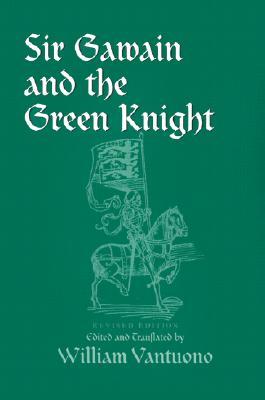This comprehensive, critical edition of Sir Gawain and the Green Knight is the fruit of William Vantuono's research on the fourteenth-century romance. In combining fantasy and realism, Sir Gawain and the Green Knight praises court life with an undercurrent of satire against a declining chivalric ideal. The poem calls up from the mythic past the shadows of archetypal figures, yet inspires modern psychoanalytic interpretations, and entertains while teaching a moral-religious lesson. The heart of this edition is the Middle English text, with a Modern English verse translation on facing pages and extensive notes at the bottom of the pages. A discussion of the manuscript, the anonymous poet and his other poems, the structure of the poem and its audience, themes, characterization, and purpose serves as a valuable introduction to the classic. With this translation, Vantuono aims to follow the original as closely as possible without sacrificing the poem's essential meaning and mood. The notes reveal the literal sense of the Middle English vocabulary where necessary changes were made for poetic effect. The reader is therefore able to compare the Middle English original, the translation, and the notes to learn about the old language, the content of the poem, the poet's artistry, and the process of translation.

Sir Gawain and the Green Knight
This comprehensive, critical edition of Sir Gawain and the Green Knight is the fruit of William Vantuono's research on the fourteenth-century romance. In combining fantasy and realism, Sir Gawain and the Green Knight praises court life with an undercurrent of satire against a declining chivalric ideal. The poem calls up from the mythic past the shadows of archetypal figures, yet inspires modern psychoanalytic interpretations, and entertains while teaching a moral-religious lesson. The heart of this edition is the Middle English text, with a Modern English verse translation on facing pages and extensive notes at the bottom of the pages. A discussion of the manuscript, the anonymous poet and his other poems, the structure of the poem and its audience, themes, characterization, and purpose serves as a valuable introduction to the classic. With this translation, Vantuono aims to follow the original as closely as possible without sacrificing the poem's essential meaning and mood. The notes reveal the literal sense of the Middle English vocabulary where necessary changes were made for poetic effect. The reader is therefore able to compare the Middle English original, the translation, and the notes to learn about the old language, the content of the poem, the poet's artistry, and the process of translation.